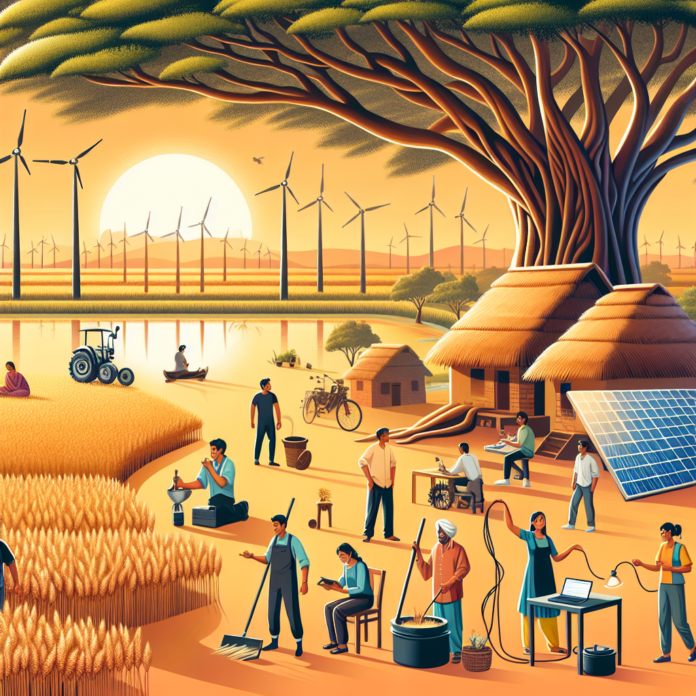Occupation Trends in Rural India: Exploring Opportunities and Challenges
Summary: Occupation Trends in Rural India: Opportunities and Challenges
Rural India, which houses around 65% of the nation’s population, is witnessing significant shifts in occupational trends. Historically reliant on agriculture, rural areas are now experiencing a diversification of occupations due to socio-economic changes, government policies, and technological advancements.
Key Points:
- Shift from Agriculture:
- Although agriculture remains a primary livelihood source, its dominance is waning due to factors like erratic weather and decreasing farm sizes.
- There is a notable rise in non-farm employment as farmers seek alternative income sources.
- Government Initiatives:
- MGNREGA: This act guarantees 100 days of wage employment per year, reducing poverty and improving rural infrastructure.
- Skill Development Programs: Initiatives like DDU-GKY aim to enhance the employability of rural youth through market-relevant skills training.
- Technological Advancements:
- Digital Revolution: Increased access to mobile phones and the internet is creating new employment and entrepreneurial opportunities.
- Agritech Innovations: Technologies like drones and precision farming are boosting agricultural productivity and income.
- Migration Patterns:
- Rural to Urban Migration: Driven by better job opportunities and living standards in cities, though it poses challenges like overburdened urban infrastructure.
- Reverse Migration: Accelerated by the COVID-19 pandemic, many are returning to villages, prompting a reassessment of rural opportunities.
- Challenges:
- Skill Gaps and Education: Many rural workers lack the skills needed for new job opportunities, necessitating targeted educational programs.
- Infrastructure Deficits: Poor roads, limited electricity, and internet access hinder economic activities.
- Social and Cultural Barriers: Gender biases, caste discrimination, and resistance to change limit occupational choices.
The transformation in rural occupations, driven by economic, technological, and policy changes, presents both opportunities and challenges. Addressing these challenges is crucial to unlocking the full potential of rural occupations and ensuring sustainable development.

